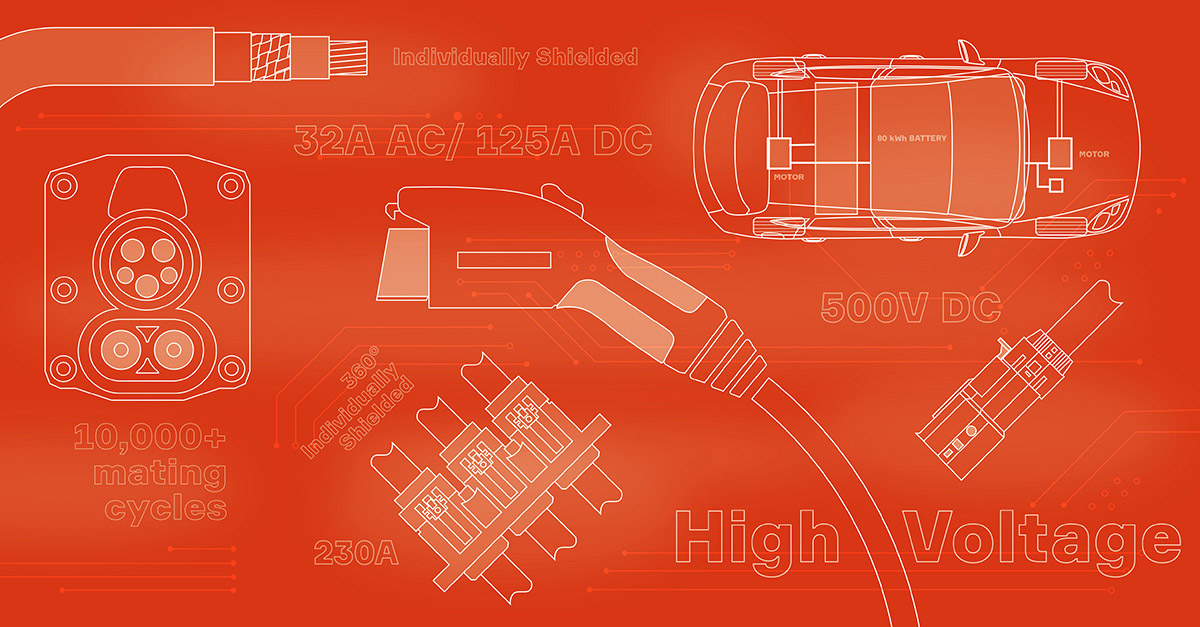High-Voltage Vehicle Systems Present New Challenges
It wasn’t that long ago that everyone was talking about hybrid electric/gas vehicles as the next logical step in vehicle evolution. But since 2010, battery costs have plummeted 87%, new entrants has energized the market with its electric vehicles, and the industry has begun to accept that all-electric cars will be much more prevalent than hybrids in the years to come.
For those of us in the wiring and connection systems business, that means a whole new level of electric power and a range of special considerations for these high-voltage vehicle systems. We have to deliver power not only to drive the wheels of the car, but also to run all of the devices that in a gas-powered vehicle would be powered by the engine, such as the A/C compressor.
High-voltage components are much more complicated than traditional wiring.
One of the biggest challenges is that they have to be shielded appropriately. The higher the power, the more electromagnetic noise is generated, and original equipment manufacturers (OEMs) want to avoid having that noise interfere with any of the
other electrical systems in the car, from the safety systems to the radio. Just as the coaxial cable that carries a TV signal has a layer of braiding in it, high-voltage circuits require similar shielding. This requirement extends to the connectors,
which now must have inner metallic pieces to act as the ground plane.
A second challenge is that the cables and connectors have to be much larger and heavier to handle high power. There is limited space in a vehicle chassis to begin with, and increased size and weight associated with the high-power electrical distribution system creates even bigger challenges for vehicle packaging design. To compensate, we continue to make advances on the low-voltage side to reduce the size and weight of the other electrical distribution products in the car.
The next challenge will be to develop systems that allow vehicles to be charged quickly. While OEMs are including larger battery packs to increase their vehicles’ range, larger batteries take longer to charge. To achieve faster charging, they’re looking at using much higher currents, from the 40 amps common today to 400 amps or higher — twice as much current as what is available for most people’s homes.
Putting that much current into a vehicle also drives a lot of heat into the system. In the past, we’ve been able to dissipate the heat passively though the cables, and increasing the gauge of the cables helps with that as well. But for very high currents, we’ve been developing active cooling solutions to more aggressively remove heat from key components. Additionally, we have an innovative approach to monitor the heat being generated and pass the temperature information to the charging system, allowing it to scale back the charging current if the temperature gets too high or to switch on active cooling features.
High-voltage vehicle components are relatively new territory for the industry, but we’re building on decades of knowledge about what OEMs need for vehicle wiring and the particular challenges they face.
Electric vehicles are the future of mobility, and getting these systems right will help us create a greener world.

